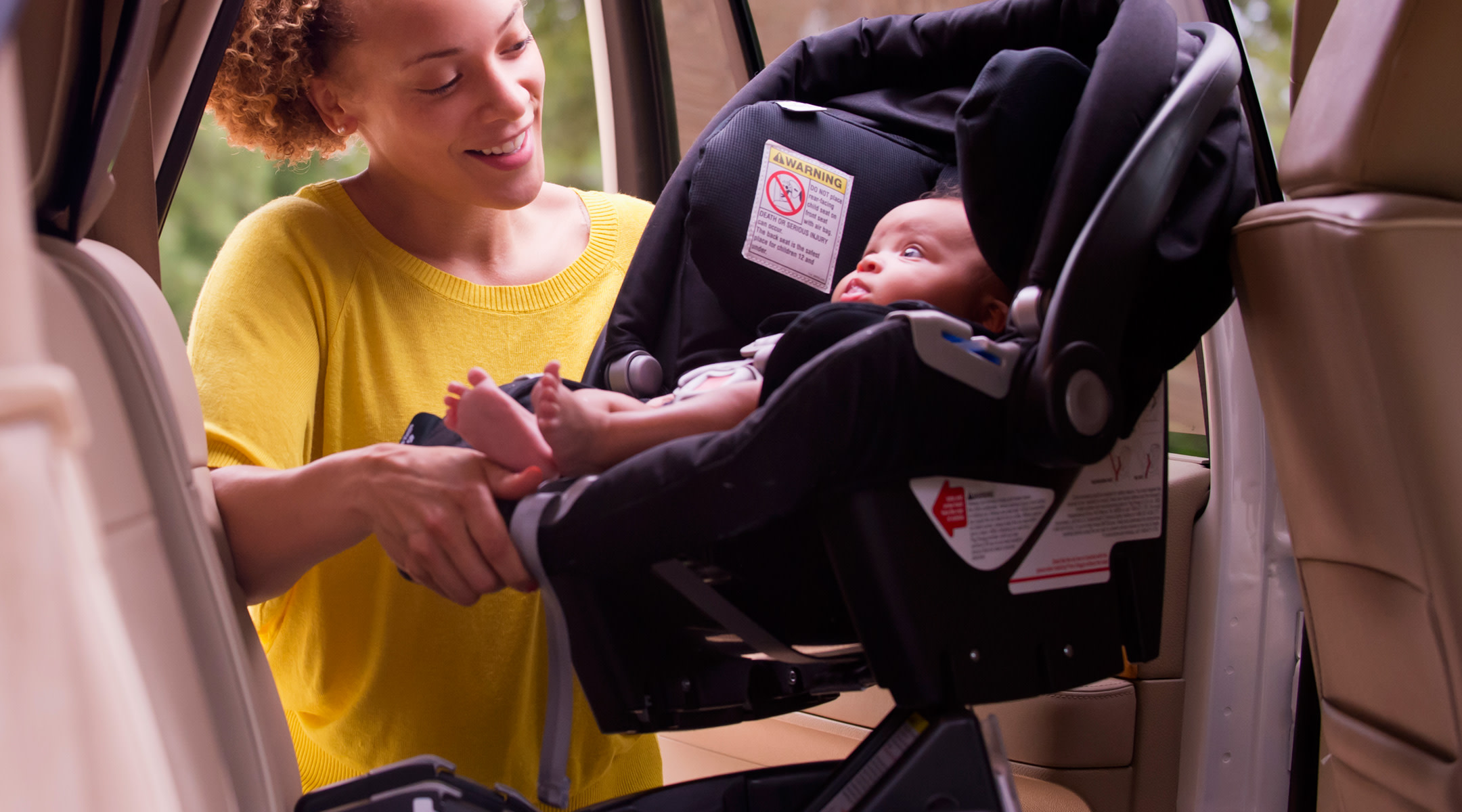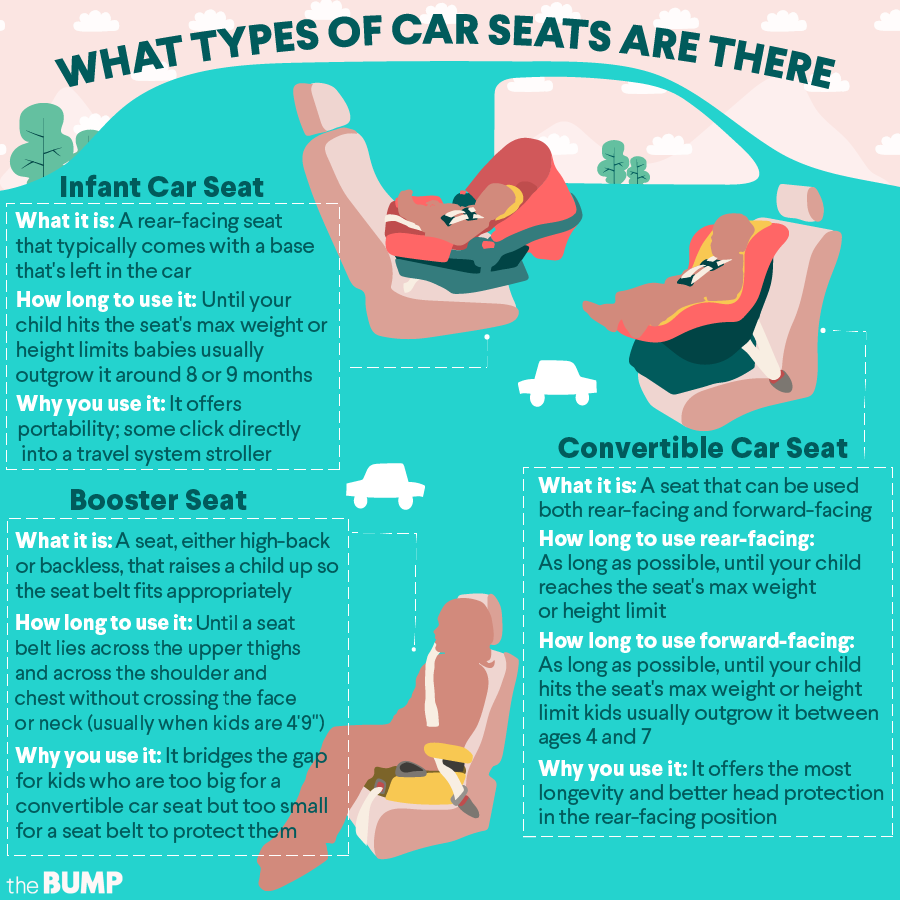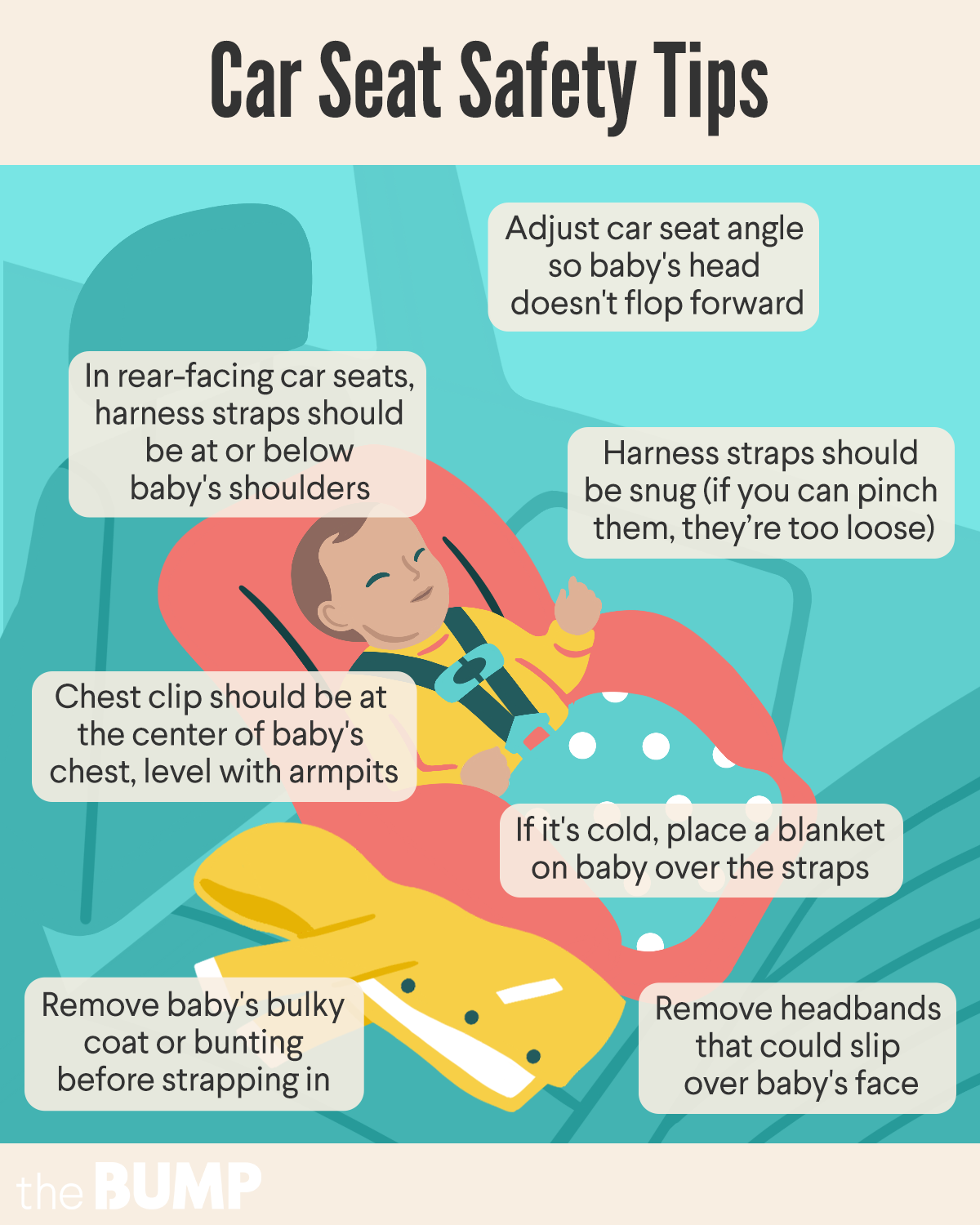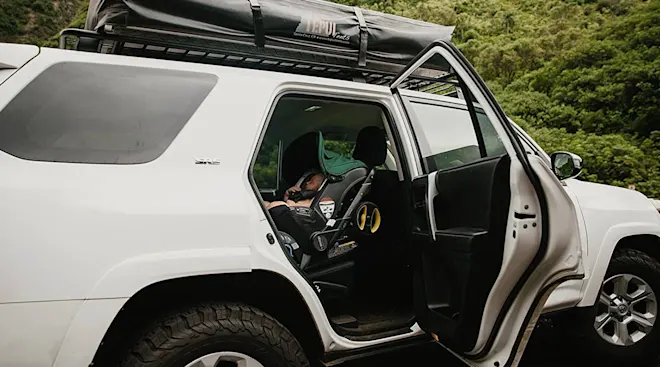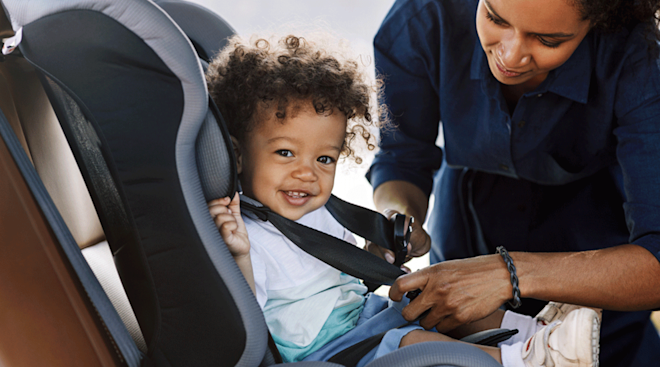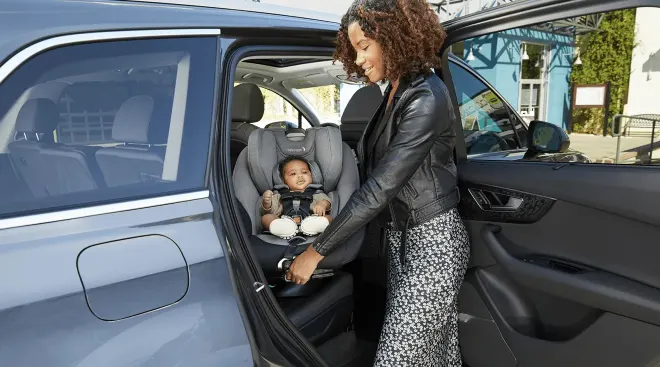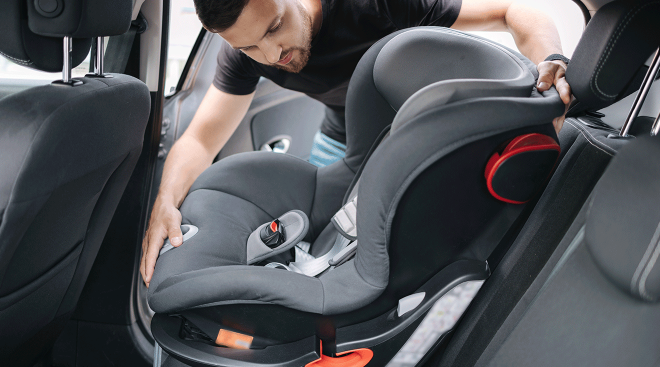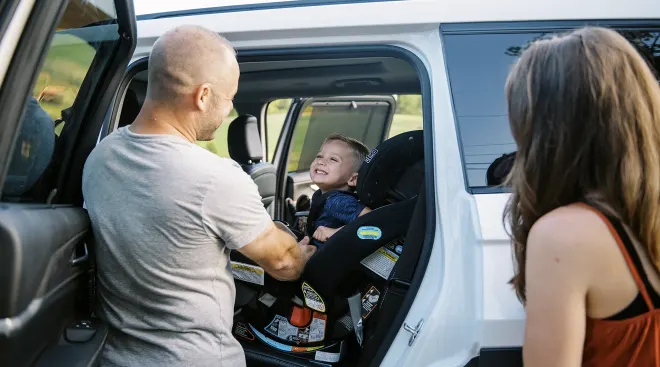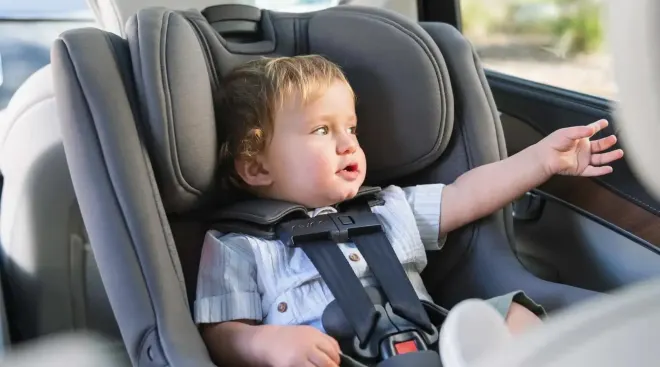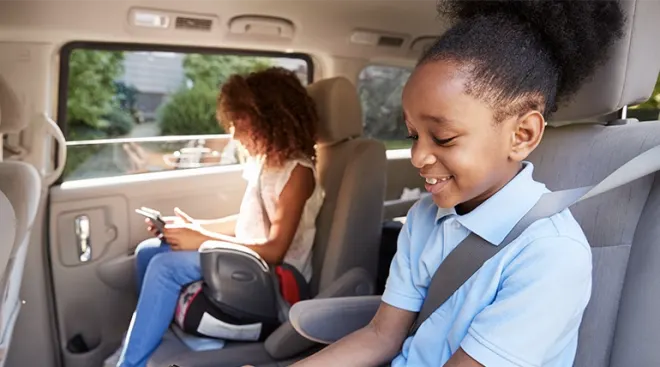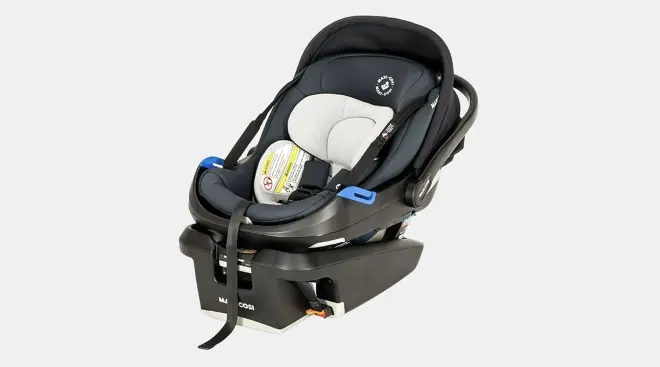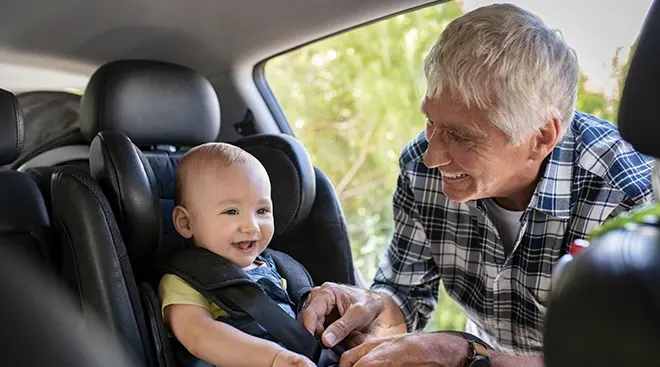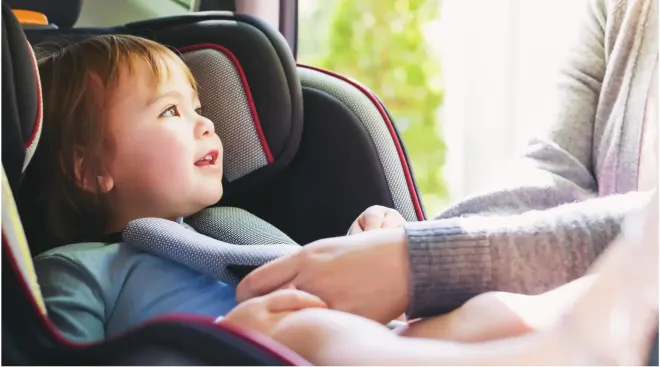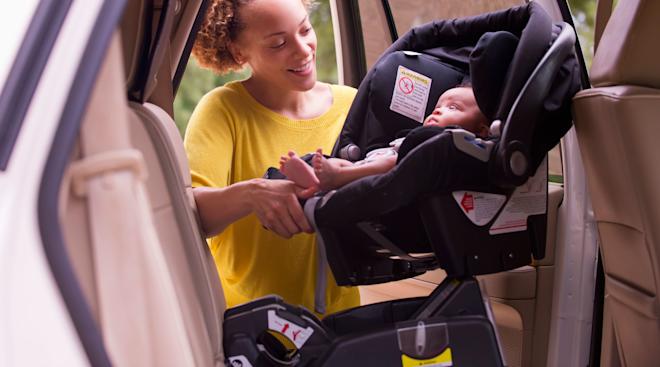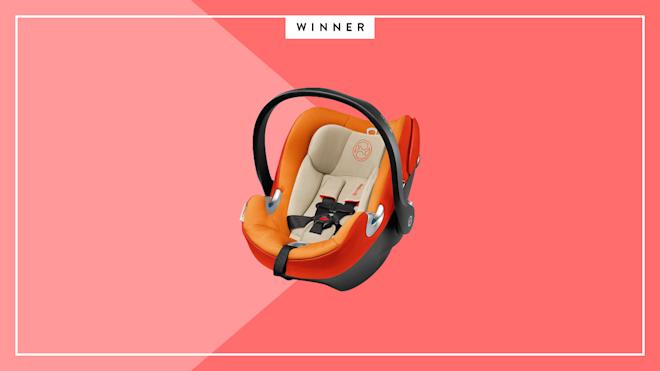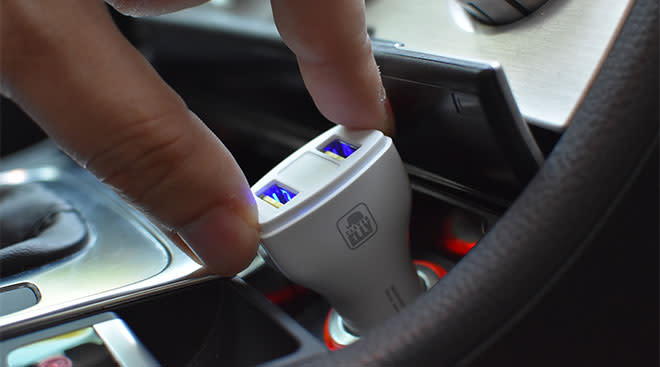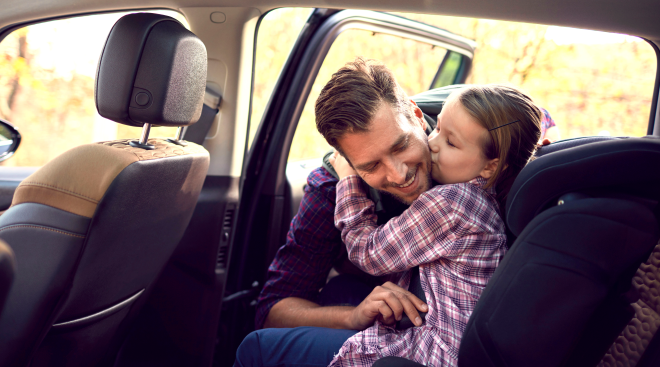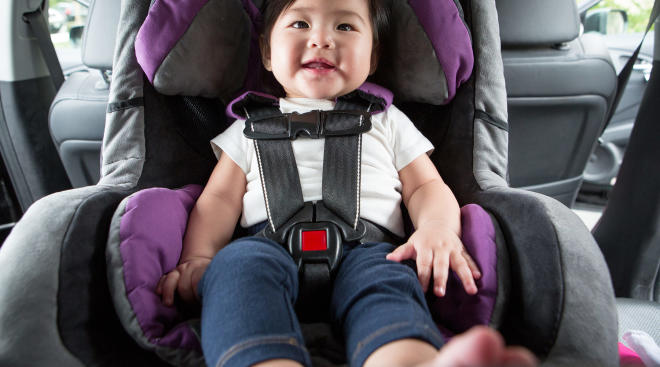Car Seat Safety: What You Need to Know
As you prepare your home for baby’s arrival, plenty of questions are probably whirling about: “Will the nursery be ready in time?” “Is the crib in the right place?” “Darn it, should I have ordered that shelving unit from IKEA after all?” But no matter how put-together the nursery is, in order to bring baby home, you’ll need to focus on car seat safety. Word to the wise: Don’t wait until the last minute! Hospitals won’t let you take baby home without a properly installed car seat, and you can bet once those contractions kick in, you or your partner won’t be in the best frame of mind to start figuring it out. Even if you’ve already picked out a car seat, you’ll need time to set it up and have it inspected. Read on for the details on how to make that ride with baby a smooth one.
As if it’s not hard enough to assess the dozens of car seats (and the thousands of corresponding reviews) on the market, the rules shift as to what to buy and when, every time safety experts discover better ways to protect your child. We get it: It can be hard to keep track—but knowing what gear to use and how to properly position it is key to ensuring car seat safety. Here’s the latest update on when it’s safe to turn your car seat forward and when to transition from car seat to booster seat and beyond, according to the American Academy of Pediatrics and National Highway Traffic Safety Administration.
When to use a rear-facing car seat
Whether you’re using an infant car seat or a convertible car seat, your child should be riding in a rear-facing seat that’s installed in the back seat of the car for as long as possible, until they outgrow your specific car seat’s weight or height limit set by the car seat manufacturer. Since most car seats are designed to accommodate up to 40 pounds or more, many kids can continue to ride rear-facing well past their 2nd birthday.
For years, the thinking around car seat safety was that it was okay to turn your child front-facing once they turn 2—but in 2018 the AAP updated their recommendations to remove the age-based guidelines and focus solely on children’s height and weight. “If you have a choice, keeping your child rear-facing as long as possible is the best way to keep them safe,” Benjamin Hoffman, MD, FAAP, lead author of the AAP policy statement and chair of the AAP Council on Injury, Violence and Poison Prevention said in the statement.
When a child rides rear-facing, the AAP explained, their head, neck and spine are supported by the car seat, and in the event of a crash, the seat absorbs most the forces and protects your child’s most vulnerable body parts. When kids ride forward-facing, their bodies are restrained by the harness, but their heads (which for toddlers are disproportionately big and heavy) are thrown forward and could potentially result in spine and head injuries.
When to use a forward-facing car seat
Once your child has outgrown the rear-facing car seat’s weight or height limit, transition them into a forward-facing seat with a harness. If up until now you’ve been using an infant car seat, which is designed to be rear-facing only, it’s time to buy a new seat.
It’s safest to have your child ride in a car seat with a harness for as long as possible, so keep your kid in their forward-facing seat until they max out on the seat’s height or weight limit. Every car seat is different, so check the manufacturer instructions.
When to use a booster seat
When your child exceeds the height or weight limit of the forward-facing car seat, they can move on to a belt-positioning booster seat. They should still be riding in the car’s back seat.
Stick with the booster seat until your kiddo is big enough for the regular seat belt to fit properly, which usually happens when children are at least 4 feet 9 inches tall. How can you tell if the fit is just right? The lap belt should lie snugly across the upper thighs, not the stomach, and the shoulder belt should lie snugly across the shoulders and chest without crossing the neck or face. Even if your child is ready to use a seat belt without a booster, though, keep them in the back seat until they’re at least 13 years old, the AAP cautions.
The Bump’s Car Seat Types infographic:
When it comes to car seat safety statistics, one recent finding is especially astonishing: Nearly 95 percent of new parents make at least one mistake while installing the seat and strapping baby in, according to a 2016 Journal of Pediatrics study. Get a good grasp of the car seat safety guidelines below to be among the five percent who get it right:
• Make sure the car seat is secured as snugly as possible. When installing in your vehicle, press down on the car seat and pull the seat belt until it’s as tight as possible. If you can move the car seat more than an inch side to side or front to back, it’s not tight enough. Vehicles and child safety seats made after September 1, 2002, are compatible with the LATCH (Lower Anchors and Tethers for Children) system, which makes it easy to install the seat without seat belts.
• Place the car seat in the safest backseat spot. Some car seat safety studies have shown that the middle of the back seat may be the most secure spot in the car for your child, but most cars don’t have lower anchors for the middle seating position. It can also be difficult to tightly install a car seat in the middle if the vehicle seat is narrow or even. Your best bet? The AAP says the safest position for your child’s car seat is wherever you can install it snugly, either with the LATCH system or seat belt—and that may be on either side of the back seat instead of the middle.
• Set the car seat at the correct angle. Your car seat is designed to recline at just the right angle to keep baby’s head from flopping forward and potentially blocking their airway (but not too reclined to pose a risk in case of a crash). Usually the proper recline angle is somewhere between 30 and 45 degrees, but read the instructions to find out the correct angle for your seat and how to adjust if needed.
• Read all of the instructions. We know it’s tempting to just figure it out on your own, but please don’t—it’s one of the biggest no-nos when it comes to car seat safety. Before you do anything, carefully read the instruction manuals for both your vehicle and your car seat. Check your seat belt labels for any important car seat safety advisories too.
• Make sure it’s locked. If your seat belts don’t have an automatic locking mechanism, you can purchase a locking clip to be sure the car seat is secured to your vehicle.
• Get an inspection. Double-check that you’ve correctly installed your seat by heading to your local NHTSA Child Car Seat Inspection Station, which are available in every state to assist new parents for free. You can also learn more by attending a Safe Kids Coalition event.
• Drive safely. Set a good example for baby by always remembering to buckle up. After that, car safety is up to you and your defensive driving skills.
The big day is here: Baby is coming home! The final step to car seat safety is getting baby (and any older kids) strapped in correctly. Once you’ve nailed each of the following criteria below, you’ll be on your way!
• Skip the bulky clothing. Bulky clothing, such as winter coats, should not be worn under the car seat harness—in the case of a crash, any fluffy padding immediately flattens out from the force, leaving extra space under the harness for baby to slip around, according to the AAP. If it’s cold, dress your child in thin layers and a thin fleece jacket. If necessary, you can put their coat on backwards, over the straps, after they’re already buckled in. Car seat bundling products or sleeping bag inserts are not safe if they weren’t packaged with the car seat.
• Adjust the harness height: For a rear-facing car seat, use the harness slots that are at or below your kid’s shoulders. For forward-facing car seat, use the harness slots that are at or above their shoulders. The five-point harness chest clip should be placed at the center of the chest so it’s level with your child’s armpits.
• Perform a pinch test. Tighten the harness straps snugly. To make sure it’s tight enough, try this classic car seat safety trick: If you can pinch the harness strap at your child’s shoulders, the straps are too loose.
Plus more from The Bump, Car Seat Safety Tips:
Updated September 2019
Please note: The Bump and the materials and information it contains are not intended to, and do not constitute, medical or other health advice or diagnosis and should not be used as such. You should always consult with a qualified physician or health professional about your specific circumstances.
Navigate forward to interact with the calendar and select a date. Press the question mark key to get the keyboard shortcuts for changing dates.
































